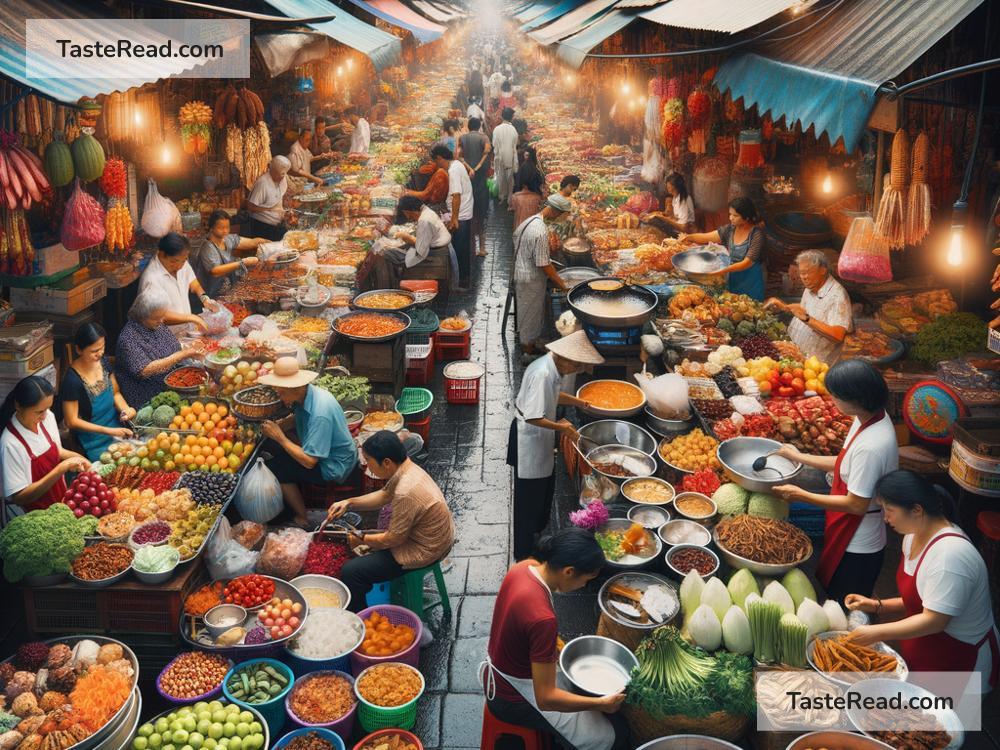The Heartbeat of Asian Cities: The Cultural Importance of Street Vendors
When you stroll through the bustling streets of Asian cities, there’s an experience that’s as integral to the fabric of the place as its temples, skyscrapers, or historical monuments: the street vendors. From the sizzling woks in Bangkok to the kebab stalls in Istanbul, street vendors offer not just food, but a taste of the city’s soul. These vendors are more than just outlets of delicious treats; they are the living, breathing heartbeats of the cities, symbolizing the vibrant, bustling life that defines Asia. Their significance stretches far beyond the economic, engraining deeply into the cultural landscapes of these urban spaces.
A Flavorful Tale of Tradition and Innovation
Firstly, street vendors are the custodians of tradition. They carry recipes that have been passed down through generations, offering dishes that you won’t find in the fanciest restaurants. These meals are a window to the past, giving customers a taste of history and tradition that is often lost in the fast-paced modern world. For many, a bite of jianbing (a kind of Chinese crepe) or takoyaki (a Japanese ball-shaped snack) is not just about satiating hunger; it’s about connecting with the culture and traditions of their ancestors.
But it’s not just about tradition. Street vendors are also innovators, constantly experimenting with new ingredients and cooking methods. They adapt to the changing tastes of the population, often creating fusion dishes that you’d be hard-pressed to find anywhere else. This blend of the old and the new makes the street food scene in Asian cities a dynamic and ever-evolving landscape, mirroring the changes within the society itself.
A Gathering Place for Community
Beyond the culinary delights, street vendors also serve as communal hubs. In many Asian cities, the street is where life happens – it’s where people come together, share news, and build community. Street vendors often form the backdrop of this socializing, offering a place where friendships are strengthened over a shared meal. These spontaneous gatherings around a vendor’s stall are a testament to the vital role these individuals play in weaving the social fabric of the city. They are not just selling food; they’re nurturing connections and fostering a sense of belonging among the city’s inhabitants.
The Pulse of the Economy
Economically, street vendors are indispensable. They provide livelihoods for millions, often serving as the first step towards financial independence for many families. For customers, especially those from lower-income brackets, they offer affordable food options that are both nutritious and delicious. This economic accessibility is crucial in cities where the cost of living can be prohibitively high. By serving the community in this manner, street vendors contribute to a more inclusive and equitable urban ecosystem.
A Tourist Attraction with a Local Twist
For tourists, the allure of street vendors lies in their authenticity. In a world where global chains dominate, street food offers a unique and unadulterated glimpse into the local culture. Visitors flock to these stalls not just for the exotic flavors, but to experience the city “like a local.” This authentic interaction provides a deeper understanding and appreciation of the place, far beyond what traditional tourist spots can offer. In this way, street vendors play a crucial role in promoting cultural exchange and understanding, bridging gaps between visitors and locals.
Preserving the Essence of Asian Cities
Despite their significance, street vendors often face challenges ranging from legal issues to modern development pressures that threaten their existence. Yet, their resilience is a testament to their importance in the urban landscape. Cities that have embraced and regulated street vending, recognizing its value, have seen not only a boost in tourism but a richer urban culture.
As guardians of tradition, community hubs, economic engines, and cultural ambassadors, the role of street vendors in Asian cities cannot be overstated. They are more than just a convenient source of food; they are a reflection of the city’s past, present, and future. In the face of modernization, preserving the street vendor culture is crucial in maintaining the unique charm and vibrant spirit of Asian cities. They remind us that in the rush of city life, there’s beauty in the simple act of stopping for a meal by the roadside, sharing a moment with the community, and savoring the flavors that tell the story of a place.


